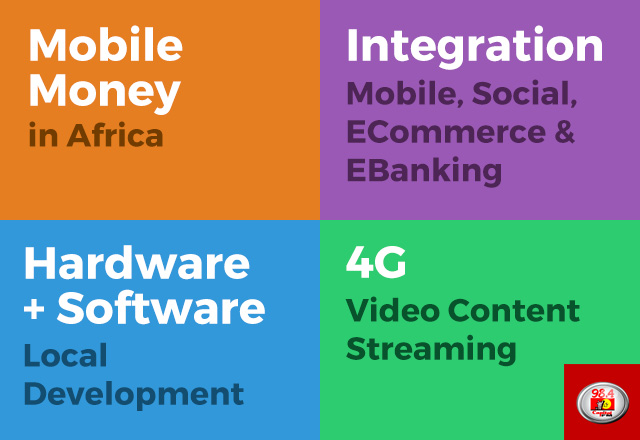If there is one tech lesson we (hopefully) learned in 2015 is that the average Kenyan knows what they want and will go the extra length to glean the most value at the best possible price. We saw consumers emerge big winners in 2015 at the height of mobile data wars, the digital migration tussle, mobile manufacturers introducing smarter, cheaper smart phones in the market and financial institutions customizing mobile services.
So what predictions can we make in 2016 in the B2C tech space? One thing is for sure, consumers will continue to dictate what’s hot and what’s not. However, we are unlikely to see blockbuster out-of-the-box innovative offerings in 2016. Instead, startups and corporations will consolidate on gains made in 2015 and expand services on existing platforms and technology.
Mobile money across Africa
As more countries in Africa adopt mobile money and partnerships are created between operators, it will be easier, faster and cheaper to send and receive money across borders. Towards the end of 2015, MTN Rwanda, MTN Uganda, and Safaricom partnered to introduce cross-border transactions. Airtel, with operations in 17 African countries, extended its mobile money transfer service. Airtel subscribers can now send and receive money to any of the 17 countries through a community of network operators.
The Kenyan Government is keen to push the One-Network-Area concept which will harmonize data and mobile money charges in Kenya, South Sudan, Uganda, and Rwanda, further pushing roaming charges down. We will not be surprised if, by the end of 2016, mobile money will be the most pervasive money transfer system in the continent. This will definitely boost regional trade. Meanwhile, mobile money interoperability apps and services are coming up across the continent.
Deeper integration
2016 is the year we will fully appreciate the integration of mobile money, social media, e-commerce, and e-banking. We have already seen how companies are using multiple channels to interact with customers. In 2016, the big goal will be to provide an end-to-end mobile solution where consumers can engage and transact with minimal navigation. This is now a reality considering there are more resources available for developers like the M-Pesa API. E-commerce and Fintech industries will be the clear winners of this integration.
Homegrown software will meet hardware
Internet of things was the buzz word in 2015. By adding smart sensors to everyday utilities and gadgets like light bulbs, fridges, washing machines, CCTV cameras, roads and practically everything else, physical objects collect data and communicate with each other.
A few pilot projects in Kenya have proved successful especially in education, health and agriculture. Projects, like the IBM EZ Farm and Illuminum Greenhouses, are allowing farmers to remotely monitor and control water levels, humidity or soil moisture via mobile phones. Nairobi County is receiving information on which roads need repair as soon as potholes emerge through sensors fixed on garbage trucks. In 2016, we are likely to see a higher adoption of IoT in more sectors and, more importantly, variations of the technology to fit our needs and resources.
This is the same transformation that is happening in the 3D printing space where efforts to create cheaper and viable models suited for Africa shows promising results. Recently opened Gearbox and UoN’s FabLab – hardware prototyping and Printed Circuit Board (PCB) fabrication facilities – are expected to boost the hardware sector the way iHub has been doing for software.
4G will accelerate production and consumption of video content
Safaricom is ambitiously rolling out its 4G network; Airtel and Telkom are preparing to launch 4G technology, hopefully in 2016 after successful tests. The high-speed internet associated with a 4G LTE network will ultimately change how consumers interact with digital services. More people will spend time on their mobile devices as data costs tumble.
We are already seeing increased production of video content suitable for online viewing. With time, the quality and quantity will improve as we usher in video streaming services like Netflix (which has signaled it will provide the service in South Africa in 2016). Content creators and the mobile networks/internet providers are likely to gain from this shift while mainstream broadcasters will have to innovate or sink. Again, consumers gain from the variety of options.
What are you looking forward to see in 2016? Let us know below.




































